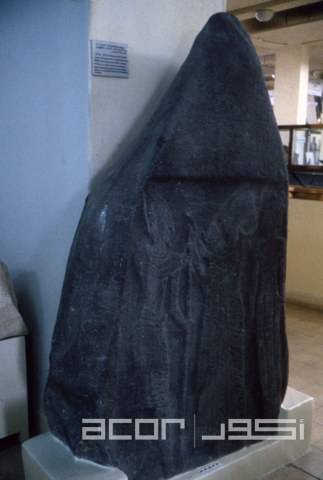AMMAN — Located in central Jordan, Khirbet Balu’a is a multi-period site, noted an American archaeologist who has worked with the Balu’a Regional Archaelogical Project.
“A famous Balu’a stele was found there and was placed in the Archaeological Museum in Amman,” said Ian Jones from the University of California, San Diego in a recent interview with The Jordan Times. He added that Baluʿa is next to Wadi Baluʿa, which is a tertiary tributary to Wadi Mujib.
“The stele seems to date from the late Bronze Age. One of the unique things about the site is its big size,” Jones said, noting that the place is stretches over some 20 hectares to the north of Karak.
The team is investigating the structure where the stele was discovered, he said, noting that he is responsible for the southwestern portion of the site that features structures from the Middle (1080-1517 AD) and the Late Islamic periods, which include the 16th-18th centuries.
“We have rectangular houses with vaults springing from external walls,” Jones said, adding that the team studies the reason that the focus shifted from one part of the settlement to another. Instead of building on top of structures from the Iron Age found on the surface, inhabitants moved their settlement to northwestern side, he said.
The locus of the settlement shifted from one side to the other. From the Middle Islamic Period (13th-14th centuries) a big village was established, Jones said, adding that the name of the village mentioned in Mamluk sources was Shirhan.
Scholars still have not determined the number of inhabitants occupying Balu’a during the Isalmic periods, Jones added.
In the 2022 archaeological season, the team found the remains of a structure which might be a khan, or way station, from the late 13th or the early 14th century, Jones said.
“What we know from the historical sources is that a khan was built in Karak during the early 14th century,” he continued, adding that the predominant building material at Balu’a is basalt.
The site continued to be occupied in the 16th and 17th centuries, evidence of which will help the team reconstruct what rural life in the early centuries of the Ottoman rule, he said.
“We should also determine where inhabitants of Balu’a settled after the abandonment of the site in the later stages of the Ottoman rule,” Jones said, adding that digging is expected to continue in 2024.
